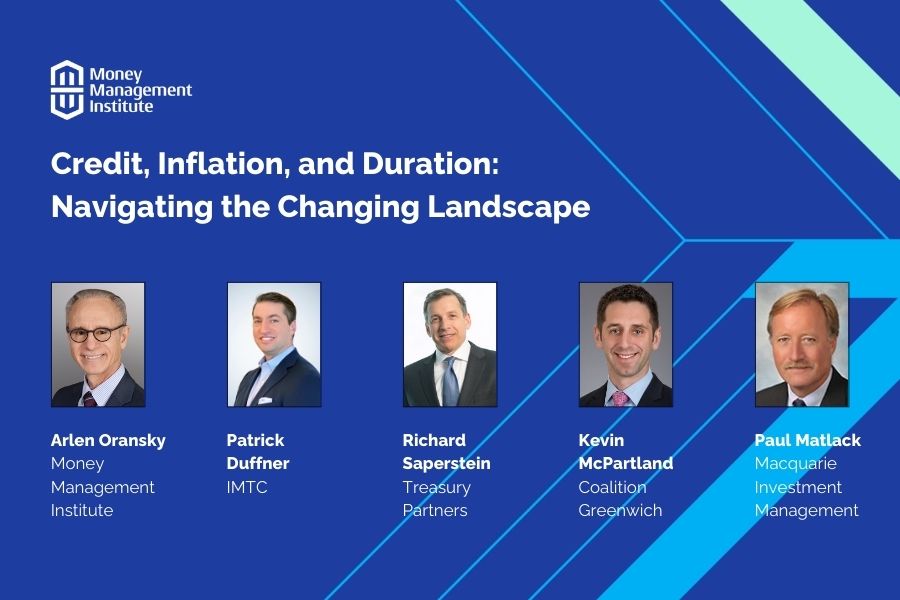The Fixed Income Brief: A No Logic Market

Guest economic analysis and muni commentary: John Hallacy
This is a market that is not able to be analyzed using principles of logic that we have learned along the way. Imposing your own logic on the market is also likely to lead down the wrong path. One could substitute economic principles in place of logic in the first two sentences. Most of the economic principles we have learned and that have been useful in times past are not quite up to the task at present. The best stance in this market is to have keen powers of observation that have a wide and deep focus. This approach may not provide all the answers but will result in fewer shocks. However, there are also the event risks to consider that are numerous now.
The state of rates
There are truths that are strongly held in the current fixed income markets. Interest rates have continued their inexorable climb higher and it has been prudent to stay at the shorter end of the curve.
On the rate side, there has been much discussion about whether the Fed is done at this point. November is more likely to be a pause but given the level of inflation and economic activity, more tightening appears appropriate. Even GDP estimates for the Q4 have been raised over previous estimates. One positive development is that the yield curve is less inverted than at the start of the year. Some would say that is a sign the much-awaited recession should arrive. But past predictors have failed us in the forecast department.
Factoring in economic indicators
In a speech today, Fed Chair Powell made the point that Core PCE Inflation is still too high at 3.7%. He also made a point on the economy as follows: “Still, the record suggests that a sustainable return to our 2 percent inflation goal is likely to require a period of below-trend growth and some further softening in labor market conditions.” Additional rate increases have not been ruled out at this point. Although there are signs that a more tempered approach is the current stance.
The one potential stumbling block is the sharp increase in mortgage rates and the decrease in housing activity. Builders can buy down mortgages only so much. Since higher retail spending is correlated with new home purchases there will probably be a slowdown in retail sales at some point. However, the latest retail gauge was at 0.7% M/M versus a forecast of only 0.3% M/M. The American consumer has not quit yet.
Global volatility and funding assistance
The status of the two wars has directly introduced more uncertainty in the markets. The administration’s request for an additional $100 billion to fund the assistance for the two conflicts has introduced another factor. All that aid would need to be funded with additional Treasury issuance. It is not the sole factor, but this consideration has contributed to the crossing of the 5% level for the thirty-year bond and the level is hovering around 5% for the ten-year maturity. The latter is the reference point for so many other financial products that are resetting as a direct result of this move.
The ongoing wars have produced a great deal of human suffering and have put political balances into turmoil. How much funding will be appropriated outside the traditional budget process will also weigh on economic outcomes. The proposed $100 billion of aid will just be layered onto the existing debt.
Another primary focus is whether oil markets will be disturbed and reach levels beyond $100 per barrel. Any impact could be quite sharp and sudden.
Increase in issuance and M&A
Municipal new issue volume has climbed to highs for the year in just the last couple of weeks. A preponderance of supply tends to cheapen the market. Last time I checked outflows from the mutual funds have been ongoing. The issuers in the new issue market have now accepted the fact that there will not be a dip in rates any time soon so they are going to market now.
On the corporate side, M&A activity has accelerated but a lot of that activity is being financed with cash or equity. Seasonal issuance is ongoing in unhindered fashion. High yield returns have been strong this year but spreads are widening again due to the heightened concerns about the path for rates and the strength of the economy.
The Federal deficit to consider
Other than the perpetual focus on the Fed, there is the fiscal policy side to consider. The federal deficit is reaching a peacetime high when the economy has been strong. The federal deficit for last year attained the level of $1.7 trillion. The result would have reached $2 trillion without one-time adjustments that were taken. Clearly, a deficit of this magnitude should not continue unabated or unaddressed.
At the same time, Treasury issuance continues to climb. Shifts in the purchasing by the buyer base are also affecting the ability for all the paper to be absorbed at satisfactory levels.
This federal budget is critical in changing the future course of the fiscal health of the nation. The days of touting modern monetary theory have attenuated in the mainstream dialogue. Elevated Treasury issuance will be the order of the day for some time. Interpreting spreads to Treasury levels may become less routine.
If budget cuts are to be considered, we need the House to function in its primary capacity. If we do not have new leadership in the House soon or by November 17 at the outside, it is very likely an extension or continuing resolution will be necessary unless there is a move to shut down the government. The closer the selection process gets to the deadline for the extension, the greater the probability that a negative outcome has a greater probability. Providing the temporary Speaker more power appears to have been gaining greater receptivity. After two failed attempts, nine candidates for the position have emerged. There is an expectation that there will be a conclusion by midweek. This factor sets the stage for even greater volatility than what has been the experience of late.
Conclusion
Despite the many risks, the fixed income markets are functioning well. Given the volatility in equity markets, there has been a renewed interest in what the fixed income markets have to offer. Higher yields are luring investors back to bonds. We are now at the point where many money managers are recommending some higher level of positioning in fixed income investments.
More about John Hallacy

John is an accomplished municipal and fixed income analyst, respected and recognized by the industry with over 35 years of experience at major financial firms including S&P’s Global Ratings, FGIC, Bond Investors Guaranty, Merrill Lynch, MBIA, Bank of America, Assured Guaranty, and most recently The Bond Buyer. A leading expert in state and local fiscal affairs. John’s experience includes ratings, insurance, public finance and sell side research.
.





